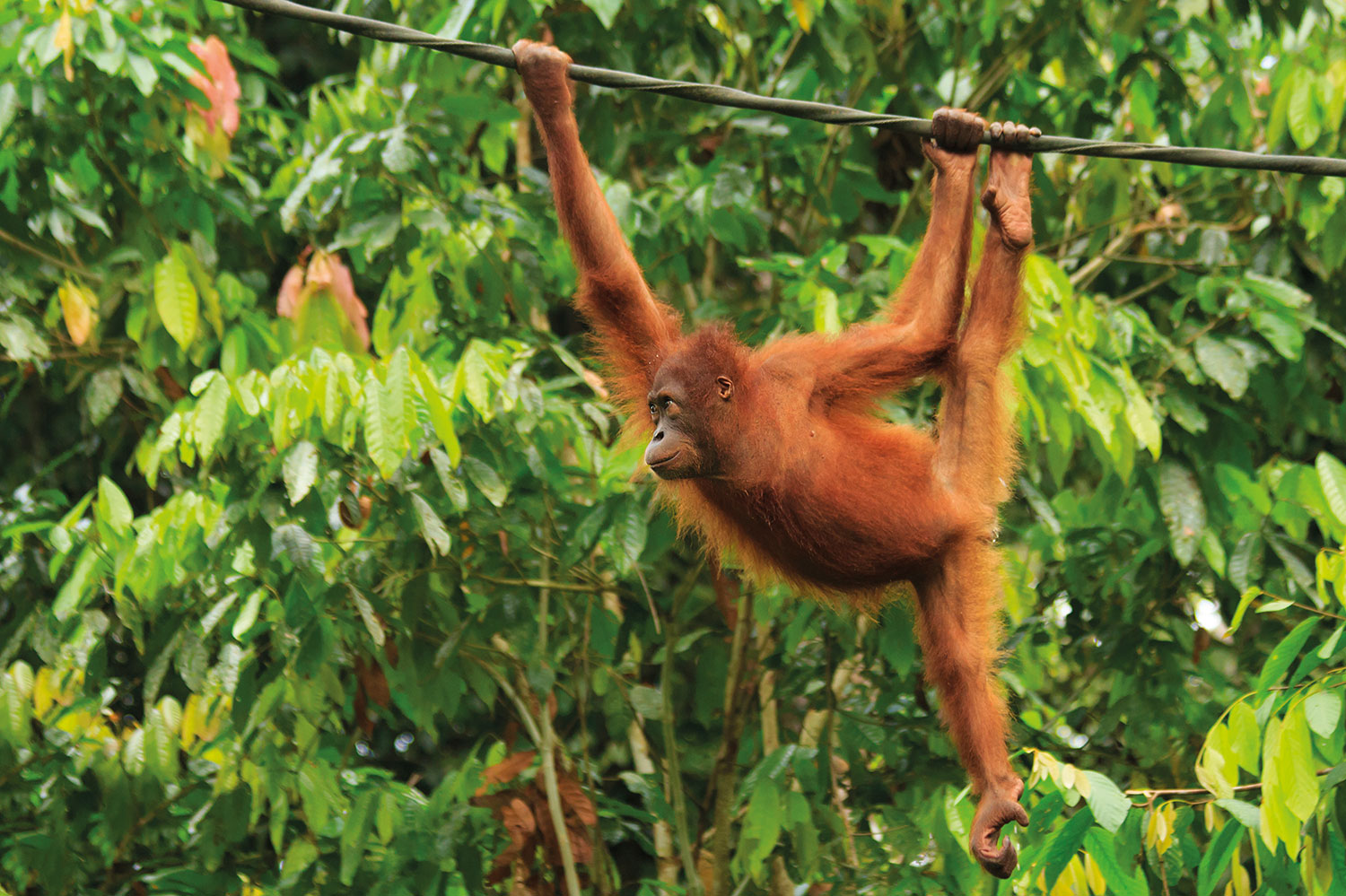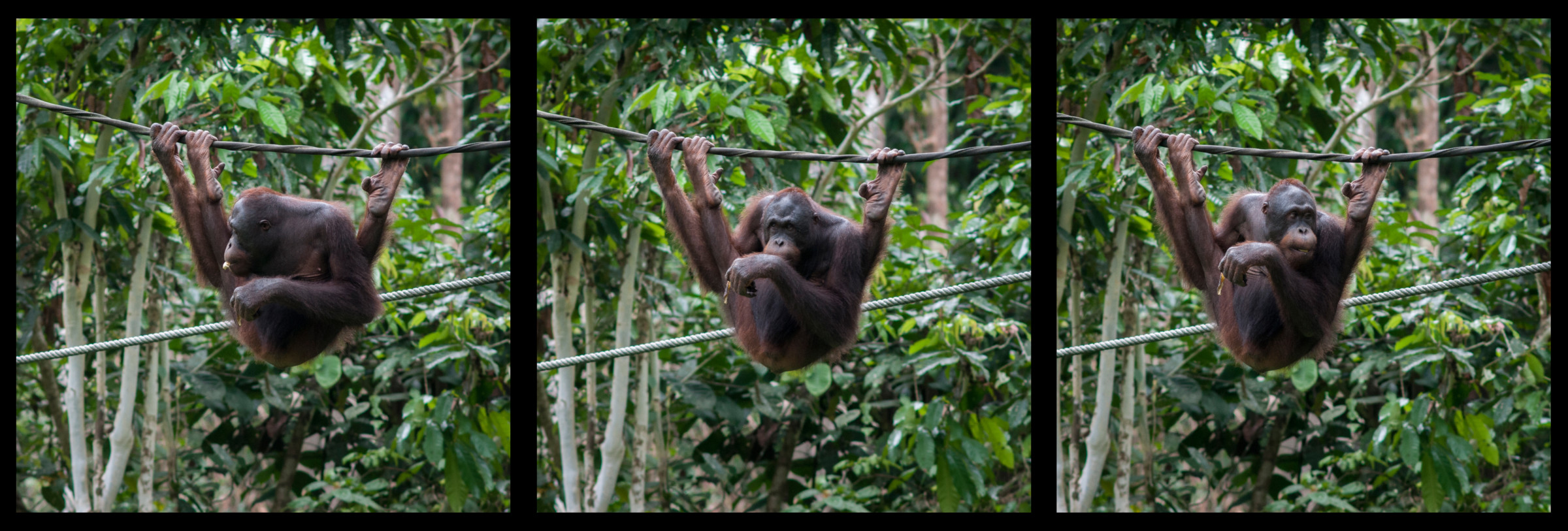Where to see orangutans in Borneo - ethically!

“Where can I see orangutans in Borneo?”
The number one question on the lips of every wildlife enthusiast planning to visit Borneo. More important however, is this: where across all of Borneo’s vast, steamy rainforests can you see orangutans ethically?
Nature’s ecosystems are breathtakingly fragile, and it only takes a generation or two of irresponsible tourism to lose precious species and habitats forever. So, in the interests of not doing that, and instead leaving a very pretty and vibrant world for our grandchildren, here are the top spots to spot those beautiful, gangly orange chaps in their country of origin.
Along the Kinabatangan River
The Kinabatangan River snakes through over 350 miles of Borneo’s northeast. Famed throughout Asia as one of the very best locations for viewing wildlife, an excursion down the river can bear incredible fruit for eagle-eyed visitors.
The area’s unique geography is the reason it’s so perfect for wildlife spotting - the river is hemmed in by a narrow corridor of rainforest, which means that life in the area are more concentrated. Floating downstream watching the banks often gifts travellers with sightings of orangutans – there around 1,100 along the Lower Kinabatangan River – and with a little luck you may even spot proboscis monkeys and pygmy elephants.
It’s not just the riverbank that’s teeming with animals, either; keep your eyes peeled for crocodiles, Irrawaddy dolphins, and even freshwater sharks!
Several NGOs and scientific researchers work in the area, and in 2005 the local government designated it as a wildlife sanctuary. The WWF currently works nearby, replanting trees that have been felled due to logging in the past. Regular patrols both on foot and aboard motorboats prevent poaching as well, helping to ensure that the precious wildlife in this stunning stretch of Borneo stays safe and undisturbed.

"Why won't she go out with me?"
Danum Valley
Also in the Sabah region of Borneo, the Danum Valley Conservation Area covers 169 square miles of pristine rainforest, and is perhaps your best option for seeing orangutans in the most unobtrusive way possible. Staying at the Borneo Rainforest Lodge , guests can look for orangutans on guided treks through the dense jungle, crossing suspended canopies a hundred feet above the forest floor and visiting tropical watering holes.
Only a limited number of passes are granted at any one period to prevent overtourism. While many of Borneo’s natural habitats have been hit by the development of industry over the past few decades, the Danum Valley Conservation Area remains all but pristine, unmarked by human influence. Even before it gained status as a conservation area, Danum Valley saw no settlement by humans, and therefore avoided all hunting, logging and human activity altogether – it’s unique in this regard, and it’s an incredible privilege to be able to visit.
Of course, this is a double-edged sword. By leaving the orangutans to their own devices and minimising the human impact on their lifestyle, the odds of actually seeing them in Danum Valley Conversation Area are lower than they might be elsewhere. It’s certainly not unheard-of for guests to make no orangutan sightings during their stay.
But hey – there’s always pygmy elephants, clouded leopards, mousedeer, gibbons, sun bears, and over 270 species of bird, including the spectacled flowerpecker – first discovered in the Conservation Area itself. It’s a pretty good trade-off, in our opinion.
Sepilok Orangutan Rehabilitation Centre
Okay, perhaps this one is cheating a little, but for a 100% chance of seeing an orangutan you can always visit the Sepilok Rehabilitation Centre in northern Borneo. Since the 60s, the centre has been taking in orphaned orangutans who have been displaced by logging, had their families broken by illegal hunting, or have been kept unlawfully as pets.
Today, there are up to 80 orangutans living across the 16-square-mile reserve, with an additional 25 infant orangutans being looked after in nurseries. A host of other creatures, great and small, are occasionally taken in for care by the centre as well.
Now, if you’re anything like us, there’s a high chance that you’re wondering about the ethics of visiting orangutans at a centre rather than seeing them in the wild. You can relax. Visitors to the centre are not allowed to handle the orangutans, and viewing is restricted to walkways.
While the centre is more than happy to provide education on these wonderful primates, they are firm in their view that the happiness and safety of the orangutans must come before the whims of visitors. Viewing platforms are available, from which you can observe the free-roaming, mature orangutans from a distance twice per day – if they choose to show up for feeding time. It’s their choice to make – as it should be!
Read more about the work of the Sepilok Rehabilitation Centre here.

"Oh, don't mind me, just nonchalantly dangling from a rope by my long, dexterous toes."
Batang Ai
Located to the southeast of Borneo, in the Sarawak region, Batang Ai is a lush national park.
Between Batang Ai and the neighbouring Lanjak Entimau Wildlife Sanctuary, there are around 1,600 orangutans living freely. In 2013 a survey made the happy discovery that some 200 orangutans were living outside the protected areas, and plans are now in place to expand the sanctuary boundaries. If you’re hoping to see our fuzzy red cousins in the more easterly third of Borneo, a range of multi-day tours are possible, travelling both by boat and on foot into the jungle.
While visiting the Batang Ai National Park you can also pay a visit to the Iban community, who settled there in the fifteenth century and have remained ever since. Their community is vibrant and fascinating; they live in longhouses, and one of their primary modes of transport is wooden longboats used to traverse the river.
And, if it gets a little too hot while creeping through the rainforest in search of orangutans, you can always take a dip in one of the many clear waters all over Batang Ai. With waterfalls, rivers and lakes all around, you may well find that searching through humid jungles for rare primates has never been so refreshing.
-----------------------------
Ultimately, your key takeaway from this article should be this: Borneo’s orangutans are wild, endangered animals, and although it’s only natural that we should feel strongly compelled to go and view them in their natural habitat, it’s crucially important that we go about this in a way that is not destructive to their lives – nor any of the other animals they share their rainforest home with.
Always do your research thoroughly to ensure that the excursion you are embarking on won’t harm the very thing you’re heading to see. We’re famously picky about which tour experiences we offer, so you can rest assured that when travelling with us, the orangutans you’ve travelled so far to see will be safe, sound, and undisturbed.
Are you thinking of travelling to Borneo? We can design a trip to suit you! Take a look at our Best of Borneo itinerary for some inspiration, then contact us to start planning your own tailor-made trip.



